Choe, J., Oh, Y., Park, C. et al. Sci Rep 15, 45,064 (2025). https://doi.org/10.1038/s41598-025-32036-4
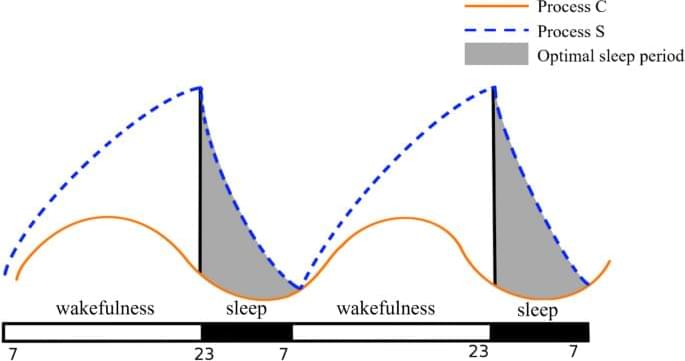

Choe, J., Oh, Y., Park, C. et al. Sci Rep 15, 45,064 (2025). https://doi.org/10.1038/s41598-025-32036-4
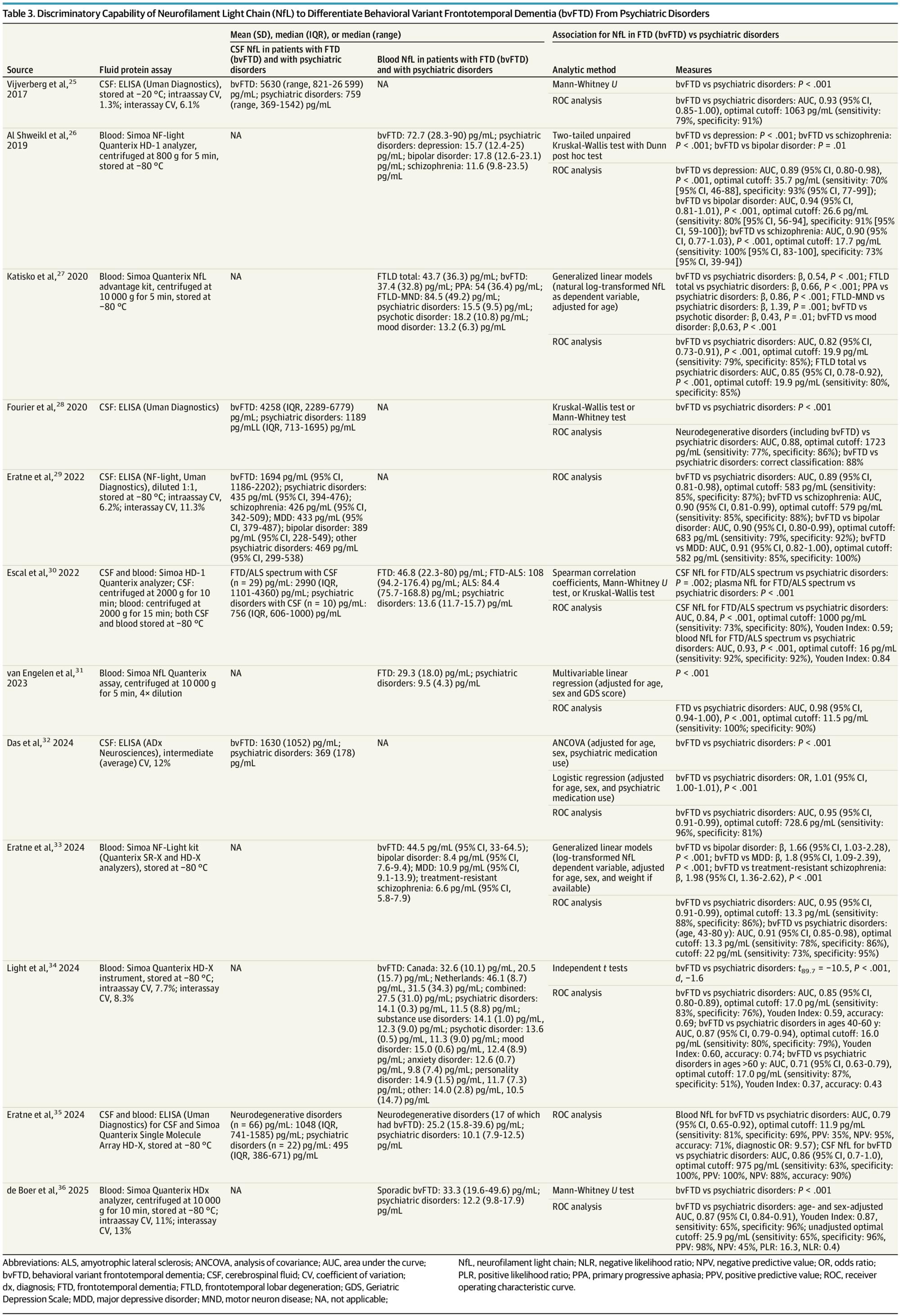
Neurofilament light chain levels in cerebrospinal fluid and blood are higher in patients with behavioral variant frontotemporal dementia than psychiatric disorders, suggesting its potential as a biomarker to aid in differentiating these conditions.
This systematic review aimed to determine whether elevated CSF or blood NfL can aid clinicians in differentiating bvFTD from psychiatric disorders. Across 12 studies reviewed, CSF and blood NfL levels were consistently significantly higher in patients with bvFTD than patients with psychiatric disorders at the group level. Furthermore, CSF and blood NfL demonstrated reasonable sensitivity and specificity to differentiate bvFTD from psychiatric disorders,38 though classification accuracy varied somewhat by study. While some of the AUCs for NfL differentiating bvFTD from psychiatric disorders had wide confidence intervals, these findings suggest a possible role for NfL in diagnostic clarification of patients with neuropsychiatric presentations. Misdiagnosing bvFTD as a psychiatric disorder may delay patients with bvFTD from early access to clinical trials when treatments may be more effective. Conversely, misdiagnosing a psychiatric disorder as bvFTD may worsen quality of life and delay treatment of ameliorable conditions.39-41
The existing literature has important limitations. Most studies were case control in design since they enrolled patients meeting diagnostic criteria for bvFTD or psychiatric disorders and then examined the association of NfL with these diagnoses. While these studies are essential for determining construct validity, they are not representative of the real-world clinical conditions by which NfL would be used. Also, such methods risk biased interpretations of the relationship of NfL with these conditions. Further studies are needed that prospectively recruit patients with neuropsychiatric symptoms and obtain NfL using clinically available assays to aid in real-time differential diagnosis.
An additional limitation of the reviewed studies is the selection and heterogeneity of psychiatric disorders. Several of the reviewed studies included patients with primary substance use, adjustment, or functional neurological disorder diagnoses.27, 31, 32,34, 35 Mood disorders, schizophrenia, and OCD may have the greatest symptom overlap with bvFTD.42 However, only 5 studies reported enrolling a total of 9 patients with OCD,25, 29, 31, 35, 36 a condition with an estimated OR of onset of 4.9 among individuals aged 45 to 59 years,43 suggesting a need for studies that include more patients with psychiatric disorders more likely to mimic core features of bvFTD despite absence of suspected neurodegenerative pathology. Moreover, FTD phenocopy syndromes (phFTD), clinical features that mimic FTD of mid-to late-life onset but do not progress to dementia, are understudied.44 Only 1 study in this review included a total of 2 patients with phFTD.

Periodontitis is widespread and can have serious consequences for overall health. Researchers at Fraunhofer have identified a substance that selectively inhibits only those bacteria that cause periodontitis, thereby preserving the natural balance of the oral microbiome. This technology has been further developed and commercialized as a range of oral care products by the spin-off company PerioTrap.
The oral microbiome is home to more than 700 different bacterial species, of which only a few can cause periodontitis. These adhere to dental plaque, particularly along the gum line, where they trigger inflammation (gingivitis). This can potentially lead to chronic periodontitis, which does more than just cause receding gums and loose teeth. If these bacteria enter the bloodstream, they can also contribute to the development of diabetes, rheumatic disease, arthritis, cardiovascular disease, chronic inflammatory bowel disease and even Alzheimer’s disease.
Pathogenic bacteria are killed by conventional oral care products such as alcohol-based mouthwashes and products containing the antiseptic chlorhexidine, but these also eliminate beneficial microorganisms. When the oral microbiome re-establishes itself after treatment, pathogenic bacteria such as Porphyromonas gingivalis gain an early advantage because they proliferate particularly well in inflamed gum tissue. Beneficial bacteria grow more slowly, and the oral microbiome quickly shifts back from its natural balance into dysbiosis, allowing the disease to recur.
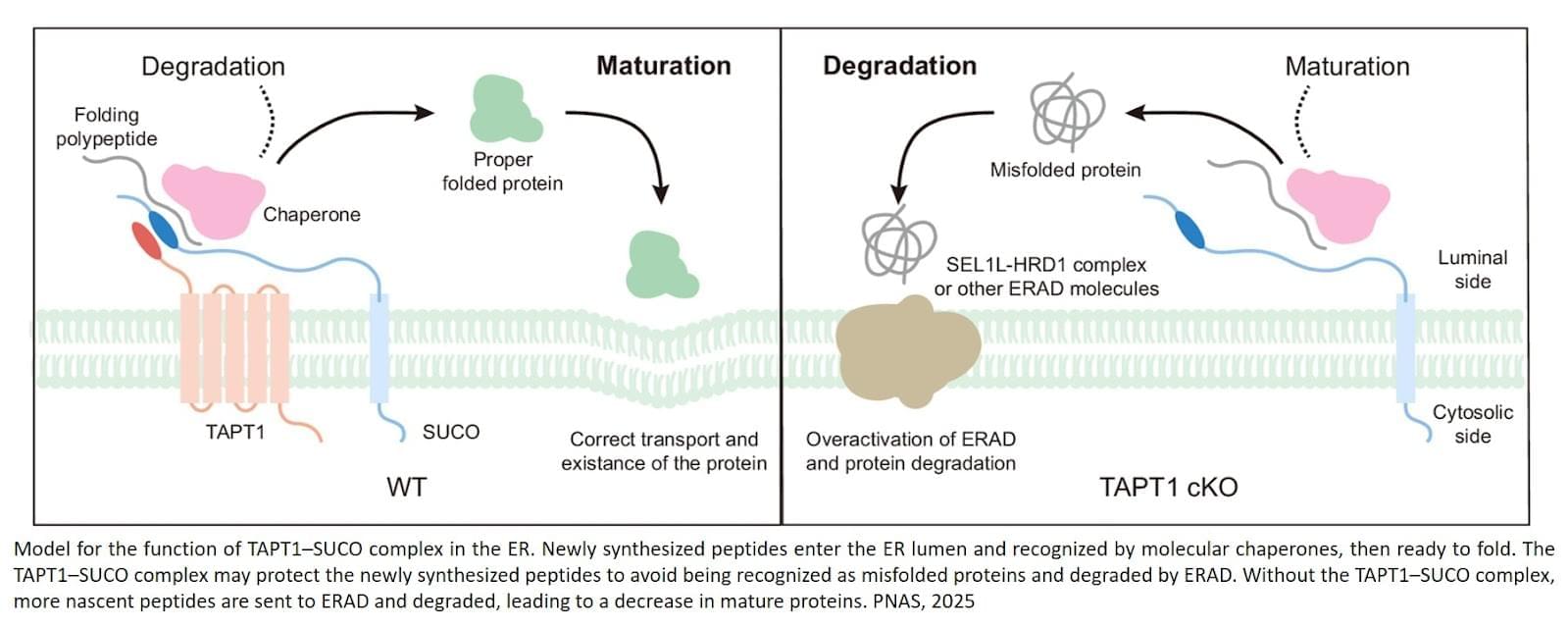


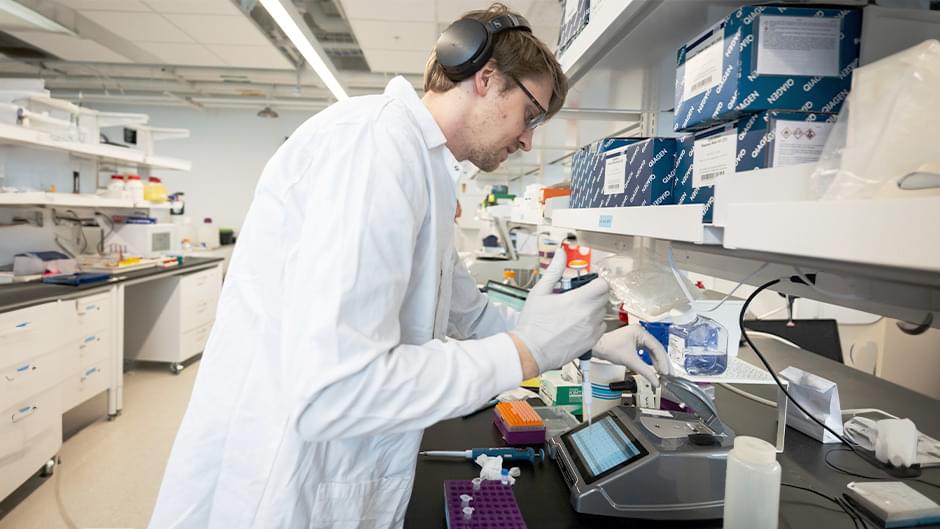
For the first time, researchers at UBC have demonstrated how to reliably produce an important type of human immune cell — known as helper T cells — from stem cells in a controlled laboratory setting. The findings, published today in Cell Stem Cell, overcome a major hurdle that has limited the development, affordability and large-scale manufacturing of cell therapies. The discovery could pave the way for more accessible and effective off-the-shelf treatments for a wide range of conditions like cancer, infectious diseases, autoimmune disorders and more.
“This is a major step forward in our ability to develop scalable and affordable immune cell therapies.”
Dr. Peter Zandstra
Ranked among the world’s top medical schools with the fifth-largest MD enrollment in North America, the UBC Faculty of Medicine is a leader in both the science and the practice of medicine. Across British Columbia, more than 12,000 faculty and staff are training the next generation of doctors and health care professionals, making remarkable discoveries, and helping to create the pathways to better health for our communities at home and around the world.
DeepSeek V4 to challenge OpenAI GPT and Anthropic Claude with coding breakthroughs
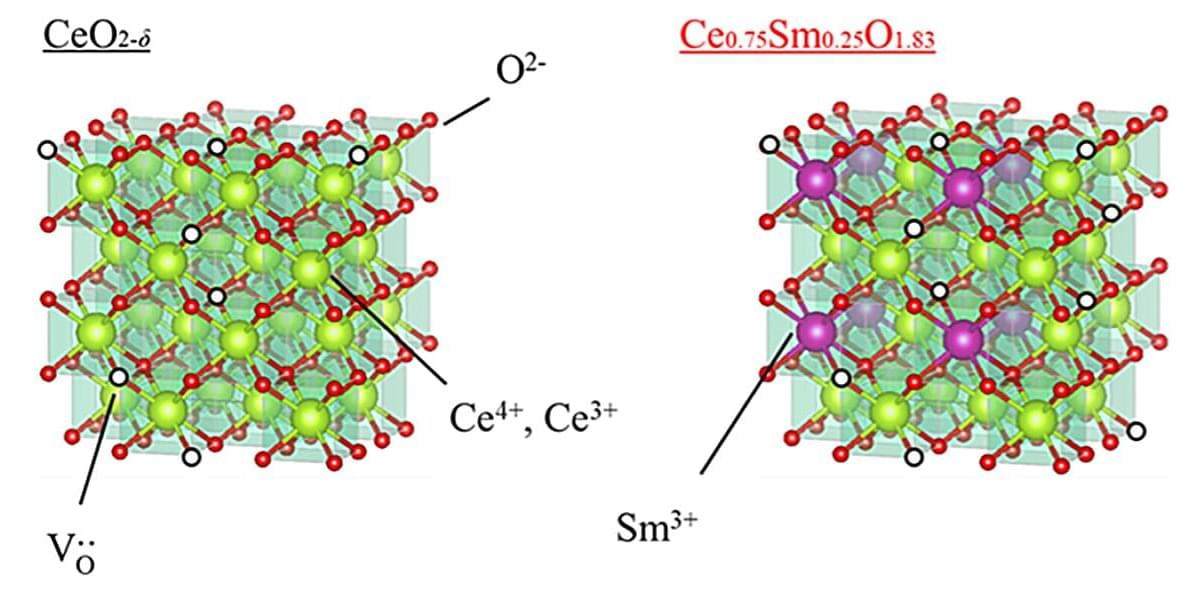
Under the threat of climate change and geopolitical tensions related to fossil fuels, the world faces an urgent need to find sustainable and renewable energy solutions. While wind, solar, and hydroelectric power are key renewable energy sources, their output strongly depends on environmental conditions, meaning they are unable to provide a stable electricity supply for modern grids.
Solid oxide fuel cells (SOFCs), on the other hand, represent a promising alternative; these devices produce electricity on demand directly from clean electrochemical reactions involving hydrogen and oxygen.
However, existing SOFC designs still face technical limitations that hinder their widespread adoption for power generation. SOFCs typically rely on bulk ceramic electrolytes and require high operating temperatures, ranging from 600–1,000 °C. This excessive heat not only forces manufacturers to use expensive, high-performance materials, but also leads to earlier component degradation, limiting the cell’s service life and driving up costs.
